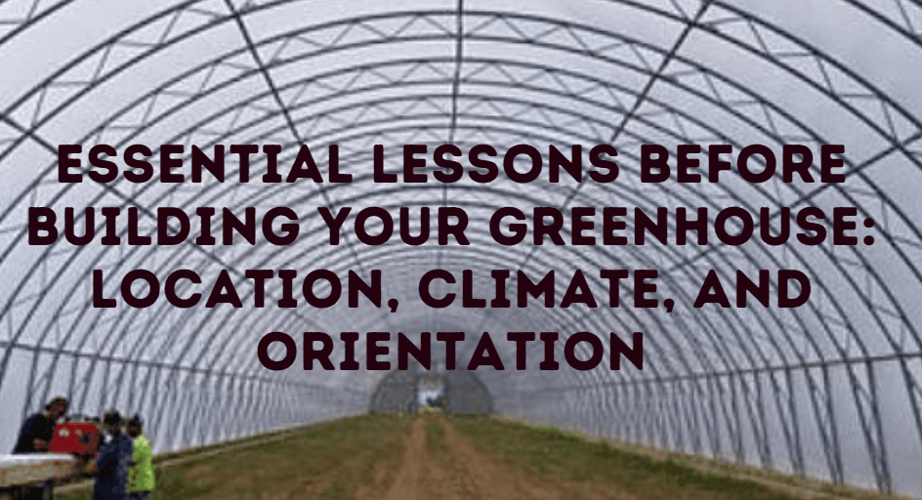Things to Consider when Building a Greenhouse
View the video here: Essentail Lessons Before Building Your Greenhouse
Essential Lessons Before Building Your Greenhouse: Location, Climate, and
Greenhouse Orientation
Building a greenhouse can be an exciting and rewarding endeavor, but it's essential to consider several critical factors before you begin. Among these, the location, climate, and orientation of your greenhouse are of utmost importance. These elements will determine the success of your greenhouse project and the health and vigor of your plants. In this blog, we'll delve into the essential lessons you need to learn before building your greenhouse.
1. Location Matters: Understand sun exposure, wind patterns, and nearby structures. The location of your greenhouse is a pivotal decision, as it greatly influences the microclimate within your structure.
Here are some key considerations: a. Sun Exposure: The amount and quality of sunlight your greenhouse receives directly impact plant growth. Therefore, it's crucial to assess the sun's path throughout the day and the changing angles of sunlight during the seasons. A general rule is to orient the greenhouse so that it receives ample southern exposure, as this maximizes sunlight.
b. Wind Patterns: Wind can be both a friend and a foe in greenhouse gardening. On one hand, adequate air circulation is essential to prevent mold and fungal growth. On the other hand, strong winds can damage your greenhouse and stress your plants. Consider natural windbreaks, such as trees or buildings, to shield your greenhouse from harsh gusts.
c. Nearby Structures: The proximity of other buildings or structures can have a significant impact on the microclimate within your greenhouse. They may cast shadows, block sunlight, or influence wind patterns. Make sure to account for nearby structures when choosing your greenhouse location.
2. Climate Considerations: Research your region's climate extremes and design accordingly. Understanding your local climate is paramount when building a greenhouse.
Here's what you should consider:
a. Temperature Extremes: Research the lowest and highest temperatures your area experiences throughout the year. This knowledge will inform the type of greenhouse and insulation you'll need. For regions with cold winters, a heated greenhouse might be necessary, while in warmer areas, a simple cold frame could suffice.
b. Precipitation and Humidity: Different plants have specific humidity requirements. In arid regions, you may need to introduce humidification systems, while in areas with high rainfall, good drainage systems are crucial to avoid overwatering.
c. Snow Load: If you're in an area prone to heavy snowfall, your greenhouse design must be able to withstand the weight of accumulated snow. Ensure that the roof and frame are structurally sound to avoid damage.
3. Greenhouse Optimal Orientation: Choose the right facing direction for maximum sunlight utilization. The orientation of your greenhouse has a direct impact on the amount of sunlight your plants will receive. Here are some pointers for getting it right:
a. Southern Exposure: As mentioned earlier, a southern exposure is generally ideal. This orientation maximizes the sun's path and provides even sunlight throughout the day. East-facing greenhouses receive morning sun, while west-facing structures get afternoon sun.
b. Avoid North-facing: Avoid placing your greenhouse facing north, as this orientation receives the least amount of direct sunlight, especially during the winter months.
c. Consider Seasonal Changes: Take into account the seasonal variation in the sun's angle. A slight tilt or adjustment in the greenhouse's orientation can optimize sunlight exposure during different times of the year.
In conclusion, before embarking on your greenhouse project, it's crucial to grasp the significance of location, climate, and orientation. These fundamental lessons will help you create the ideal environment for your plants, fostering healthy growth and bountiful harvests. By understanding the unique characteristics of your local climate and carefully planning the positioning of your greenhouse, you'll be on your way to becoming a successful greenhouse gardener. With this knowledge in hand, you're ready to take the first step towards your greenhouse gardening adventure. Happy gardening!










